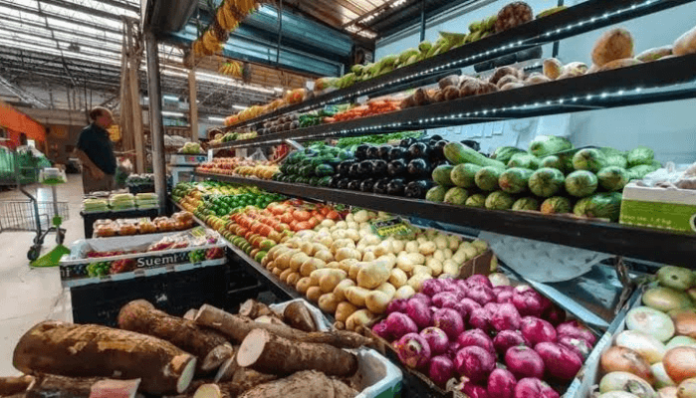Sub-Saharan Africa holds the world’s youngest population, with nearly 70 percent under the age of 30. At the same time, the region faces one of its greatest challenges: ensuring reliable and sustainable food security amid climate change, urbanisation, and rising demand. Agriculture should be where these two realities meet, a sector where youth energy fuels the farms and agribusinesses that feed the continent. Yet for many young Africans, farming represents hardship rather than opportunity.
Smallholder farming continues to dominate, with most families working on less than two hectares of land and relying heavily on rainfall. Profit margins are thin, markets are unreliable, and access to modern tools or credit remains limited. For young people seeking livelihoods, agriculture too often appears to be an economically unviable option rather than a viable business. This perception, shaped by structural barriers and cultural stigma, carries profound implications for the region’s food systems.
1. Farming remains an unattractive economic option for youth
Across the region, smallholder agriculture remains the norm: labour-intensive, low-yielding, and vulnerable to shocks. Because modern inputs and reliable markets are often out of reach, farming rarely generates returns sufficient to sustain livelihoods or encourage long-term investment. According to the African Development Bank, over 72 percent of youth in Sub-Saharan Africa live on less than $2 a day, and the International Labour Organisation reports that over 70 percent of young adults are engaged in insecure forms of work, most of it in agriculture, where wages are low and contracts are rare. Together, these conditions leave young people with little incentive to view farming as a path to stable income.
Land access is one of the biggest hurdles. Customary tenure systems often favour older men, leaving young people, especially women, excluded from owning or leasing land. The absence of secure rights prevents them from planning, investing, or scaling operations, and in turn locks them out of meaningful opportunities.
Access to finance is another significant obstacle, as formal lenders demand collateral and credit histories that most young farmers simply do not have. While some youth-oriented programmes exist, they are often underfunded, poorly targeted, or accessible only to those with connections. Until these structural barriers are addressed, agriculture will remain an unappealing career path for most young people.
2. Farming carries a persistent social stigma
Beyond the economic challenges lies an equally damaging image problem. In many societies, farming is still perceived as a fallback for those who failed in urban or academic pursuits, a narrative reinforced by education systems, family expectations, and media portrayals.
Young Africans, increasingly urbanised and digitally connected, are drawn to sectors that are seen as modern, dynamic, and respected. Agriculture, by contrast, is frequently associated with poverty, drudgery, and rural hardship.
The absence of visible role models reinforces this stigma, since successful agritech entrepreneurs rarely receive the recognition needed to inspire the next generation. In Nigeria, for example, Farmcrowdy, founded in 2016 by Onyeka Akumah and his co-founders, has built a digital platform that connects urban investors with smallholder farmers. By providing farmers with capital, inputs, training, and access to markets, the company has worked with tens of thousands of farmers across multiple states, proving that agriculture can indeed be technology-driven and profitable. However, such examples remain the exception rather than the rule.
To attract youth, agriculture must be reframed as a sector of innovation and impact. This requires investment in youth-centred narratives, the amplification of success stories, and the integration of agriculture into the spaces where young people already spend their time.
3. Structural risks make agriculture a hard sell
Agriculture everywhere carries risks, but in sub-Saharan Africa these risks are magnified. Climate change has brought more frequent droughts, floods, and heatwaves, threatening yields and income stability. Most farmers lack irrigation, crop insurance, or savings to cushion such shocks, leaving them especially vulnerable.
Weak infrastructure compounds the problem. Poor roads, inadequate storage, unreliable electricity, and limited market linkages increase costs and erode profitability. The Food and Agriculture Organisation notes that in sub-Saharan Africa, around 40 percent of fresh fruits and vegetables are lost before reaching markets, and about 25 percent of staples such as rice and maize are wasted, largely due to inadequate storage and handling infrastructure. For young farmers starting out, these losses can be devastating and discourage long-term commitment.
Market volatility continues to undermine confidence, as farmers struggle with fluctuating prices, middleman exploitation, and limited access to reliable real-time data. While digital platforms provide potential solutions, access remains uneven, particularly in rural communities.
International trade dynamics further tilt the playing field toward large-scale agribusinesses with higher productivity, subsidies, and political leverage. Smallholder youth farmers are left struggling to compete without targeted policy protections or inclusive financing mechanisms.
4. Unlocking potential requires youth inclusion and systemic reform
Sub-Saharan Africa cannot achieve food security without its youth. According to the International Labour Organisation, the youth unemployment rate in the region was 8.9 percent in 2023, but the deeper challenge lies in job quality: more than 70 percent of young adults are engaged in insecure forms of work, and nearly 22 percent of youth are neither in employment, education, nor training (NEET). These conditions make their meaningful participation in agriculture essential not only for rural livelihoods but also for the stability of food systems.
Securing land for young people, including women, through reforms that allow ownership or leasing under clear legal frameworks is critical for encouraging long-term investment. Financial systems must also adapt by providing products tailored to youth, such as small loan sizes, flexible repayment schedules, mobile platforms, and crop insurance designed to mitigate risk. Partnerships between fintech firms, governments, and agricultural banks can help close the gap.
Training programmes must evolve to move beyond technical agronomy and provide business-oriented skills such as marketing, digital literacy, and supply chain management. These skills should be delivered through platforms that resonate with youth, including online courses, mobile apps, and peer networks.
Representation is equally important, as agricultural strategies should not only treat youth as beneficiaries but also include them as decision-makers. Involving young people in policy bodies and planning committees ensures that reforms reflect their realities and ambitions.
Real pathways for youth in agriculture will only emerge when systems align with their aspirations instead of requiring them to adjust to conventional frameworks. With the right reforms and investments, farming can be transformed into a sector of opportunity, innovation, and leadership for the next generation.
About the author
Asamoah Oppong Zadok is a sustainable agriculture researcher at Lincoln University, Jefferson City, Missouri, and the founder of Sustaina Harvest in Ghana. He holds a Master of Science in Sustainable Agriculture from Lincoln University and a Bachelor of Science in Agribusiness from the University of Cape Coast, Ghana.



